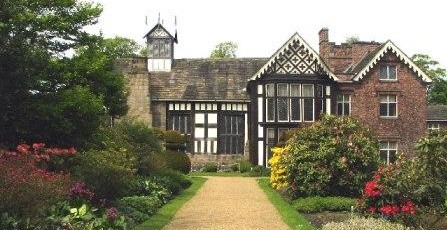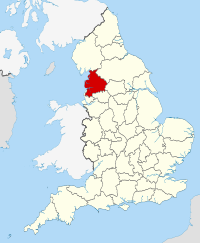Overview and Attractions
The Lancashire Travel Guide highlights local visitor attractions, places of interest along with useful tourist information for travellers. The area guide features travel information on local transport and travel, entertainment, events, facts & figures, maps and accommodation. Lancashire is a county that has a wide mix of attractions for visitors.
The county has vibrant seaside resorts with plenty of industrial history and heritage to some tranquil countryside, the county does offer visitors a wide array of options.
There is the famous resort of Blackpool that attracts many visitors and further north Morecombe that is a popular destination among visitors.
Lancashire has a long history and was at the forefront of the Industrial Revolution, its legacy still remains. The county was once the centre of the coal and cotton industries and mills can still be seen located across the county in towns such as Rochdale and Bolton.
The mill towns of Blackburn and Burnley were once at the centre of the textile industry that placed such a big part in Lancashire's history.
Blackburn is located 20 miles from Manchester; the former mill town has a long history with the textile industry dating back to the 13th century, the town experienced rapid growth during the industrial revolution.
Local attractions include Blackburn Cathedral located in the town centre; guided tours are available for visitors. Corporation Park is a Victorian park located in the town; the park is popular among walkers and for recreation activities including tennis, football and bowling.
Burnley is a market town located 25 miles from Manchester. Like Blackburn during the industrial revolution Burnley grew as a mill town and was once one of the largest producers in cotton cloths.
Local attractions include Towneley Park that includes woodland walks, golf courses, gardens, sculpture trails and includes historic Towneley Hall site of Burnley's Art Gallery & Museum; that includes a number of exhibitions, set in the town's largest park provides a wonderful day out for all the family.
Other attractions include Pendle Hill and the Pendle Witches with guided tours available to learn more about the historic area. The South Pennine Moors offer a scenic natural landscape that is popular among walkers, mountain bikers, horse riders and orienteering.
The city of Preston is located on the River Ribble; it is the administrative centre of Lancashire. Historically Preston was a boom town during the industrial revolution becoming a centre for engineering and industry.
Local attractions include the Harris Museum & Art Gallery with a number of collections on local history and fine arts. The Lancashire Infantry Museumthat includes a number of displays, achieves and military history showcasing the storey of the Lancashire regiments over the years.
The Ribble Steam Railway is a preserved railway using steam locomotives running along Preston Docks, offering visitors the chance to enjoy the golden age of rail travel.
Historic buildings include St Walburge's Church dating back to the 19th century, it is a Grade I listed building and is known for its gothic revival architecture and its spire making it a well known local landmark.
Shopping facilities include the Fishergate and St George’s shopping centres that include a number of well known high street names.
The city of Lancaster is located to the north of Lancashire; it is the county town of Lancashire and it the settlement from which the county gets its name. Located 3 miles from Morecombe Bay, Lancaster became a market town and gained importance as a busy trading port.
Local attractions include historic Lancaster Castle, dating back to the 11th century, Lancaster City Museum located in the city centre looking at local history and archaeology of the city and surrounding areas. Lancaster Cathedral is an impressive Grade II* listed building in the city centre, the cathedral is in active use and hosts a number of events, concerts and is open for visitors to tour.
Whilst Manchester is no longer officially regarded as part of Lancashire, given it is part of the Greater Manchester metropolitan borough, it is the main centre in the region.
Manchester is a hotbed of activity in many areas, the third largest city in England has gained a reputation of note in the fields of culture and the arts to compliment its renowned reputation in music and in sport. There is a wide range of attractions for visitors to experience when in Manchester.
Lancashire is a place of real interest for visitors. The county is fortunate to have a wide range of visitor attractions that help bring in many visitors each year, these are heady times for the county and in particular Manchester.
Seemingly on a crest of a wave with a renaissance in many areas well under way and plans for much more, the whole vibe of the area is upbeat and positive. While Manchester itself offers a lot for visitors whatever their interests, the rest of Lancashire that is sometimes overlooked also has its own charm.
From its rich heritage to its stately homes and lovely countryside, the county is worth exploring further.
Its location in England's North West is well serviced by road, rail and airport links from Manchester Airport for both UK and overseas visitors.
Disclaimer: The information given in on this website is given in good faith and to the best of our knowledge. If there are any discrepancies in no way do we intend to mislead. Important travel details and arrangements should be confirmed and verified with the relevant authorities.



